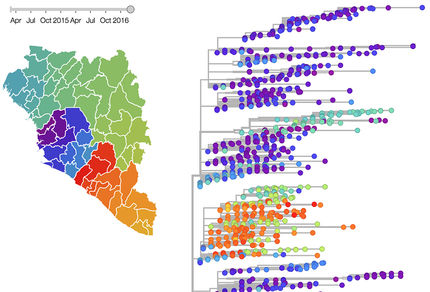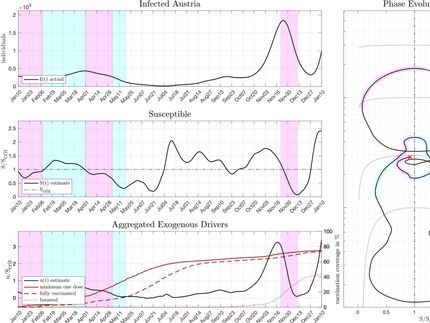Computer model aims to aid with planning during epidemics
A team of researchers has created a software system designed to model epidemics, with the aim of maximizing public-health protections while minimizing economic and social costs.

JoshuaWoroniecki / Pixabay
“The coronavirus pandemic has underscored the need to have a well-designed plan to combat epidemics in a way that balances economic health with human safety,” explains Dennis Shasha, a professor at NYU’s Courant Institute of Mathematical Sciences.
To address this, Shasha and his colleagues at NYU Abu Dhabi and Ecohealth Alliance, an environmental health nonprofit, developed EpiPolicy (“Epi” is shorthand for “epidemic”), which replicates the extensive “what-if’ analysis process that public-health and other professionals undertake in determining a cost-effective policy: a schedule of when, where, and how extensively an intervention, including school closures, social distancing policies, and vaccination drives, should be applied.
EpiPolicy, which may be calibrated to reflect a region’s socio-economic and demographic characteristics, simultaneously models each intervention’s effect on disease spread and economic cost. Moreover, it captures different scenarios for epidemics like COVID-19.
“The policymaking process is often an iterative and laborious programming-intensive effort where parameters are introduced and refined, model and intervention behaviors are modified, and schedules changed,” Shasha observes. “We have designed and developed EpiPolicy to support this effort, but in a way that can potentially simplify the calculations that need to be made under shifting conditions and that is broadly applicable.”
The team, which also included Azza Abouzied, Anh Mai, Miro Mannino, and Zain Tariq of NYU Abu Dhabi as well as Whitney Bagge of Ecohealth Alliance, allows policy-makers to try out intervention strategies and see their consequences. In addition, EpiPolicy uses Monte Carlo and reinforcement learning techniques to design intervention strategies automatically. These automatic methods can take into account risk and uncertainty in making predictions.
The model, recently presented at the Association for Computer Machinery (ACM) Symposium on User Interface Software and Technology, is also explained in this video.
Other news from the department science
These products might interest you

Limsophy by AAC Infotray
Optimise your laboratory processes with Limsophy LIMS
Seamless integration and process optimisation in laboratory data management

ERP-Software GUS-OS Suite by GUS
Holistic ERP solution for companies in the process industry
Integrate all departments for seamless collaboration

Get the life science industry in your inbox
By submitting this form you agree that LUMITOS AG will send you the newsletter(s) selected above by email. Your data will not be passed on to third parties. Your data will be stored and processed in accordance with our data protection regulations. LUMITOS may contact you by email for the purpose of advertising or market and opinion surveys. You can revoke your consent at any time without giving reasons to LUMITOS AG, Ernst-Augustin-Str. 2, 12489 Berlin, Germany or by e-mail at revoke@lumitos.com with effect for the future. In addition, each email contains a link to unsubscribe from the corresponding newsletter.


















































